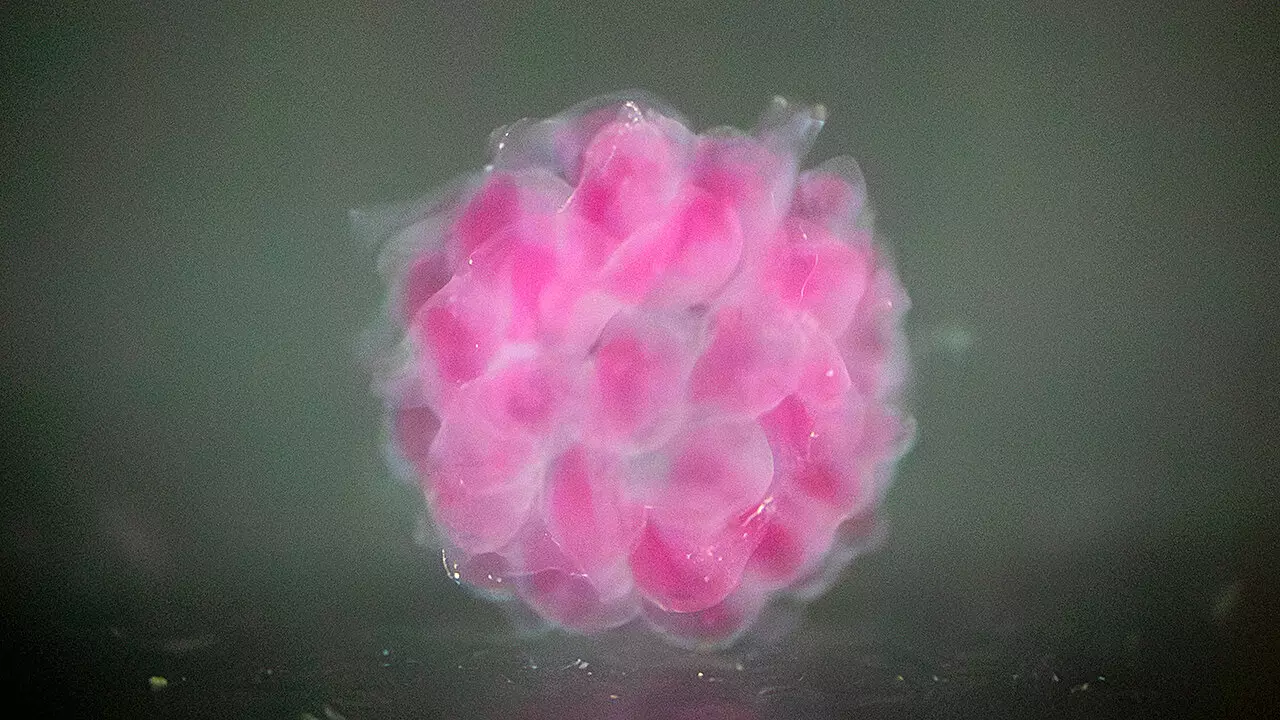The realm of bioprinting is on the verge of a radical transformation, thanks to innovative research emerging from the University of Virginia School of Engineering and Applied Science. Under the direction of Liheng Cai and his Ph.D. student, Jinchang Zhu, this groundbreaking research strives to unlock the potential for printing human-compatible organs on demand. This leap not only represents a crucial milestone in tissue engineering but also highlights a unique methodological approach that has likely far-reaching implications for regenerative medicine.
What sets their research apart is the digital assembly of spherical particles (DASP), a refined bioprinting technique that allows for the construction of three-dimensional tissue structures by manipulating biomaterials with precision. This method offers a significant advantage over existing bioprinting technologies by enabling the creation of voxel-like structures with carefully controlled mechanical properties, simulating the characteristics of various human tissues. The implications of this development could reshape the landscape of organ transplantation and disease research.
Creating Biomaterials with Precision
At the heart of this research lies the development of biomaterial hydrogels that closely mimic human tissue. Through a meticulous process of engineering polymer hydrogels—structures that can encapsulate human cells—the researchers have managed to create materials that are not only biocompatible but also exhibit reduced toxicity compared to traditional hydrogel bio-inks. This means that the materials can create a more favorable environment for cell growth and function, a crucial aspect when examining tissue behavior in health and disease.
The duo’s innovative double-network hydrogel systems, which consist of two intertwined molecular networks, provide the necessary mechanical strength while allowing for high tunability. This tunability is essential for matching the diverse mechanical properties found in various human tissues. The team’s use of “click chemistry” for rapid cross-linking of these hydrogels introduces a game-changing potential for swift fabrication and functional applications in tissue engineering.
A New Paradigm in Organ Modeling
The creation of organ-like structures, known as organoids, paves the way for a revolutionary framework in medical research. Organoids serve not merely as models of human tissue but also as platforms for understanding disease mechanisms and screening potential drug candidates. This offers the possibility of accelerating drug development while minimizing costs and ethical concerns traditionally associated with animal testing.
Such advancements could also address the dire need for transplantable organs, which has become a critical challenge in modern medicine. With over 100,000 people waiting for organ transplants in the U.S. alone, the ability to bioprint personalized organs might significantly reduce transplant waiting times and improve patient outcomes. The technology pushes the boundaries of what is possible, bringing us closer to a world where organ failure may no longer present a death sentence.
The Mechanics of DASP: A Technological Leap
What makes DASP particularly compelling is the new multichannel nozzle engineered by the research team. This nozzle enables the mixing of hydrogel components on demand, a process that circumvents the limitations of pre-mixing due to the rapid cross-linking nature of the materials. The result is a technique that not only prints larger droplets but also suspends them immediately, offering an innovative solution to mimic the mechanical properties of human tissues accurately.
Cai and Zhu’s persistence in overcoming challenges associated with soft matter science and 3D bioprinting signifies a strong commitment to advancing the field. Their thorough exploration of viscoelastic properties is not merely an academic trend but lays a durable foundation for future endeavors in bioprinting. As stated by Cai, the full realization of DASP’s potential could redefine artificial organ transplants and disease modeling.
The work conducted by this formidable duo stands at the intersection of technology and biology, addressing fundamental concerns within the healthcare industry. As bioprinting technology continues to mature, it harbors immense potential to foster innovation in personalized medicine, redefine organ transplantation, and facilitate breakthroughs in drug discovery. The journey toward printed human-compatible organs is not just a scientific aspiration; it is rapidly becoming a tangible reality, one that could bring unprecedented enhancements to human health and longevity.

